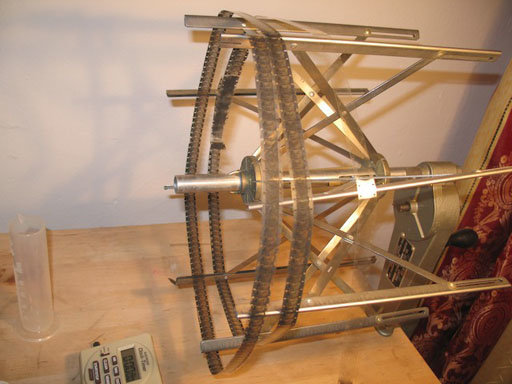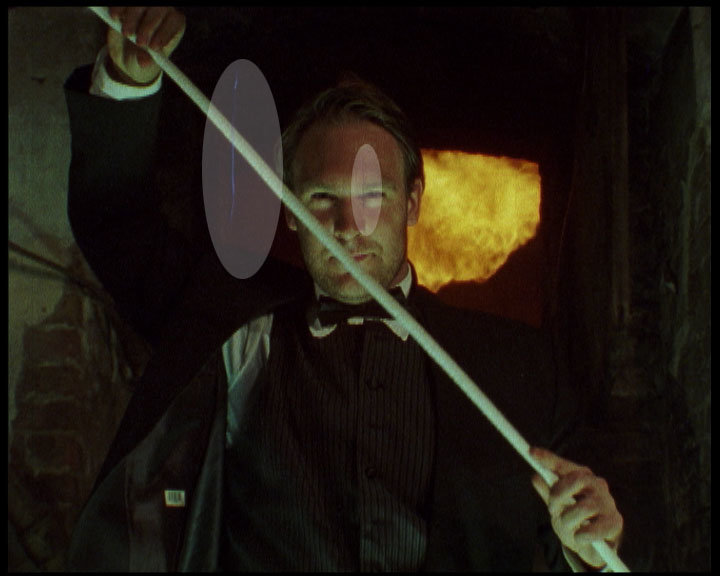
max sacker
Basic Member-
Posts
16 -
Joined
-
Last visited
About max sacker
- Birthday 05/02/1983
Profile Information
-
Occupation
Cinematographer
-
Location
Berlin, Germany
Contact Methods
-
Website URL
http://www.maxsacker.com
Recent Profile Visitors
1,376 profile views
-
Hi Kristian, Can you tell me how you built the video assist. I can't find the right lenses, CCD cameras to build one for my Kinor 16CX-2M and it's driving me nuts.
-
Hmmm yeah I definitely bought the wrong lens. I've been looking online and can't seem to find the right lens. Either it's auto iris or needs a huge camera attached to it. Can you recommend a good lens and camera module that I could use as a video assist for the Kinor? It shouldn't weigh too much because I'm right on the brink of my weight limit on my glidecam. Would REALLY appreciate any tips on this. Thanks. Max
-
I agree. For M42 s16 just convert a Krasnogorsk-3.
-
I recently solved this problem by radically altering the times, and turning the film very fast at approximately 3 rotations a second. I made up a litre of solution and added all 8 packets of the B2 bleach, doubling the potency. My times were: Developer A: 12 min/~20ºC Wash: 20 min /~20ºC Bleach B: 12 min /~20ºC Wash: 5 min /~20ºC Clearbath C: 7 min/~20ºC Wash: 10 min/~20ºC Re-exposure: I took the film off the reel and coiled it on around old drying rack and shone a 100 watt bulb from about half a metre away. I turned the drying rack (see picture) around to ensure even re-exposure, but left the light blasting on there for well over 2 minutes. Redeveloper (A): Stupidly I poured away the first developer ( I know you should never do this) so I could only mix the correct solution for 600ml with what I had left, which was too shallow for my tank, so I mixed for 800ml with a weaker potency and developed for longer (10 min/~20ºC) Wash: 10 min/~20ºC Fixer: 8 min/~20ºC After a quick wash I opened the tank to check out the film. A perfectly exposed reversal image! This was a welcome sight after all that brown nothingness or half reversal half negative images. I was chuffed! However, I noticed when touching the film that the emulsion rubbed off, especially on the perforation edges. I attributed this to not enough fixer and fixed with a higher concentration (500ml fixer + 500ml water) for about 10 minutes. I then washed thoroughly for a good 20 minutes, even placing the under a showerhead of extreme water flow. Even after all that the emulsion rubs off when in contact with water. I dried the film, and when touching it dry it won't rub off, but if I wet my fingers and run them over the image it rubs off still. Any ideas what went wrong here? Hope this helps!
-
I've got the exact same problem! I've modified my developer times from slow to fast, from under to over 12 minutes. I have also been using a morse g3 tank and the fomapan kit chemistry. The result is always the same, brown images, sometimes partially negative, and partially reversal. What's really strange is that recently I got a roll where the negative gradually became a positive, one single frame was perfect: (black and white- not sepia, and reversal) and then it slipped back into a negative. I've taken this film to the labs here and they are stumped. My latest theory is that it's something to do with re-exposure or the second developer or the fixer. I doubt buying a russian tank will solve the problem. It seems to be a chemical issue. I am going to try to use a reversal bath from now on. But first, can anyone answer me these questions? 1.) How fast should I be rotating the tank? I've been told one pass per minute, which means turning it VERY fast, (About 3 rotations a second) and I've also been told 1 rotation every 3 seconds. Or I mixed up the information. 2.) How should I do the re-exposure? Until now I have placed the spools on two nails driven into a white board, and blasted a 100w bulb directly above the film toward the emulsion side, and shone flashlight through the other side. Some people have told me you should actually take the film out into daylight. 3.) Why doesn't the fixer turn the burnt out leaders clear? Surely the beginning of the film has been fully exposed and should turn clear when fixed? 4.) Can I apply the fixer before the second redeveloper and get a negative? Would appreciate any answers about this as I am desperately trying to process fomapan at home. Thanks! Max
-
I saw some articles here a while back about building video assists for the Krasnogorsk. I now need to build a video assist for my Kinor16CX-2M and am having trouble focusing my security camera on the ground glass. All I see is a small speck of an image, and my assumption is I need to put some kind accurately calculated lens in front of this camera. Any DIY video tap builders here that can give me detailed instructions on what to do? Would appreciate that! Max
-
I just turned in some Fomapan 16mm B&W reversal to my local lab here in Berlin (andec-film) and they said they have issues with fomapan. Apparently white spots appear quite often. Has anyone heard of this problem before?
-
Just a note on this for any final cut pro users: Final Cut Pro, even the latest Studio 2 version chokes up sometimes with Blackmagic .AVI files. It isn't unlikely that FCP will unexpectedly quit when scrubbing through imported blackmagic AVIS. At least that has been my recent experience. With super 8, as with any other film medium it is nice to have uncompressed 422, because you can convert it to Digibeta for television, but the blackmagic codecs don't always work flawlessly with FCP, even when you use the Media Manager to reconvert them to FCP friendly files. That said FCP is still the most amazing programme ever!
-
I'll be heading to galway tomorrow. Any advice as to where specifically (address wise) to look? I've called the Galway Camera Shop but to no avail. Otherwise I'll shoot without. Cheers for the help!
-
HELP! I am stuck in rural Ireland, with no professional photography shop anywhere in the country that might sell a Tungsten to Daylight conversion filter. (Kodak Wratten 85 or other) I have a Krasnogorsk-3 with me and was hoping to shoot a plate of a road out the back of a car for rear projection or keying. I have Kodak Vision 200T stock and a few yellow filters, skylight and a polarizer. Unless there is anyone on this forum in the Co. Clare area that could lend me a 77mm filter my only option is to shoot it as it is and deal with the blue tint in post. Is a blue tint correctable in post? Will mounting yellow filters help to reduce the blue tint? Would appreciate any help or suggestions! Thanks! Max
-
Here some of the minor scratches are more visible. These scratches are permanent. The camera still has it's original 4:3 gate. Is there anything I can do other than shooting another stock, checking for loose bits in my camera or sending my camera away for refurbishment?
-
Yes this is the first test I have done on my K-3, though it was serviced and inspected (apparently) before I bought it. The people I spoke to around here seem to all unanimously agree that it is the lab. Apaprently this happens occassionally at this particular lab. However I want to make certain that my K-3 is okay before I shoot anything important on it. I used Kodak VISION 200T and I someone else mentioned it could be the width of the stock that is causing the problem and that I should test reversal. The scratch is on the emulsion side and is so deep that it penetrated the colour layer, making it purpleish-blue. I have uploaded some pictures where this scratch can be seen. There are also smaller black scratches, and another smaller, purpleish-blue one in the bottom right corner of the frame. Maybe you can determine something from the pics.
-
Hello All, I just got my negative back from my lab. The guy at the lab told me the film was scratched by the camera. He said this was either due to a fault in the camera or because it I misloaded the film by making the loops too large. This sounded dodgy to me. I spoke to two people familiar with the K-3 and they confirmed what I suspected: when the film is misloaded it does not run at all, and you can tell instantly that there is something wrong. The rolls ran smoothly and I was told that this lab does have a history of scratching film during the development process. This was a test film and the first time I used the K-3. Is it possible that the camera scratched the film or is this the lab trying to cover up their blunder? If scratching can be caused by misloading, are there any tips for the loading process that can prevent it? Would appreciate your input.
-
This reply is a bit dated. You've probably figured this out by now. I had the same problem as well. The zoom lens will not mount if the zoom lever is close up mode. Move the zoom lever back to it's start marking (F) and the lens should mount.
-
Wow. Thanks. Time to head down to the local photo-mat and buy out the store. Is it easy to find clip on filter boxes to fit these lenses? Really appreciate it. Max




